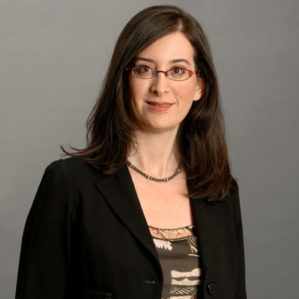This article first appeared in the December 2018 issue of Wharton@Work.
For its recently released Women in the Workplace report, McKinsey surveyed 279 companies and more than 64,000 employees about the state of women in corporate America. The fifth annual study revealed that any progress in closing the gender gap “isn’t just slow — it’s stalled.” That’s not news to Wharton management professor Nancy Rothbard. Citing a range of studies on why so few women attain top corporate positions, she told a group of participants in the Women’s Executive Leadership program, “Time is not fixing the problem.”
Rothbard acknowledges the importance of “leaning in,” which highlights that part of the problem is women not asserting themselves or taking enough risks. But she also emphasizes that it shouldn’t all depend on women to make this happen. She cites evidence that shows that men receive more opportunities for advancement, more critical assignments, bigger budgets, larger staffs, and more mentoring and sponsorship.
The new McKinsey study supports Rothbard’s premise, noting that women already are “leaning in”: they earn more bachelor’s degrees than men and ask for promotions, negotiate salaries, and stay in the workforce at about the same rates. But while the study focuses on the need for companies to be more accountable for hiring, developing, mentoring, and sponsoring more women, the Women’s Executive Leadership program, which Rothbard directs, focuses on what individual women can start doing immediately to advance their careers.
Once the grim statistics and research findings are out of the way, Rothbard shifts decidedly into proactivity mode. She identifies the top challenges for women, and a robust discussion of how those challenges play out across industries, geographies, and roles follows. Those challenges include:
- needing to constantly prove yourself
- gendered expectations: balancing the need to be liked and be respected
- hitting the “maternal wall,” where your competency and commitment are questioned
The highly practical program offers strategies for addressing these and other issues. One strategy involves taking advantage of an opening that comes dozens of times a day. Rothbard says many women recognize that they need to make others aware of their achievements, but are wary of sounding like they’re bragging. “When someone asks, ‘How are you?,’ answer that you’re excited, and then proceed to describe what went well. You come across as very sincere,” she says, “and you didn’t bring the subject up, so it’s a more humble way of sharing your accomplishment.”

She also says women need to identify critical assignments that will take them to the next level — and then ask for them. “If you don’t,” she says, “people will make assumptions and decisions for you. You have to be more explicit about what you want and what you need.”
Another powerful strategy is consciously shifting from a fixed to a growth mindset. A fixed mindset results in the avoidance of challenges for fear of failure or appearing weak. Having a fixed mindset leads us to ignore useful feedback and feel threatened by others’ success. Rothbard say it’s common, and creates a formidable barrier to growth. In contrast, a growth mindset allows us to embrace challenges, and see effort as the path to mastery. Having a growth mindset helps us to learn from feedback and take responsibility when things don’t go as planned.
Rothbard encourages women to reflect on their “fixed mindset voice,” learn what triggers it, and then talk back to it. Instead of accepting negative self-talk, create a mindset shift. If you often pass on challenges for fear of failure, say “If I don’t try, I will automatically fail.” Likewise, replace “It wasn’t my fault” with “If I don’t take responsibility, I can’t fix it. I need to listen to and learn from feedback even if it’s painful. That’s what highly successful people do.”
Ultimately, positive change for women in the workplace isn’t happening quickly enough at the organizational level. That means individual women leaders need to proactively overcome biases and challenges to rise to greater levels of responsibility. The maxim “Great leaders aren’t born, they’re made” has become a tired cliché. But that doesn’t mean it’s not true. “There is no magic wand,” says Rothbard. “In Women’s Executive Leadership, we give you space to reflect on where you are and where you want to go, and provide the tools you can use to get there.”


